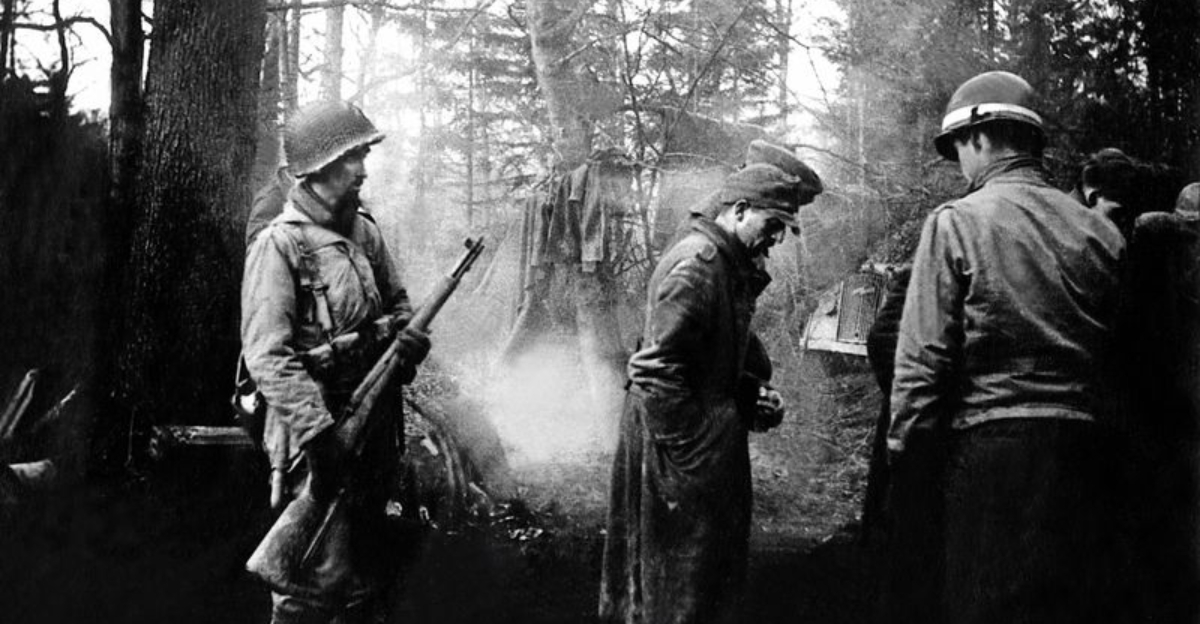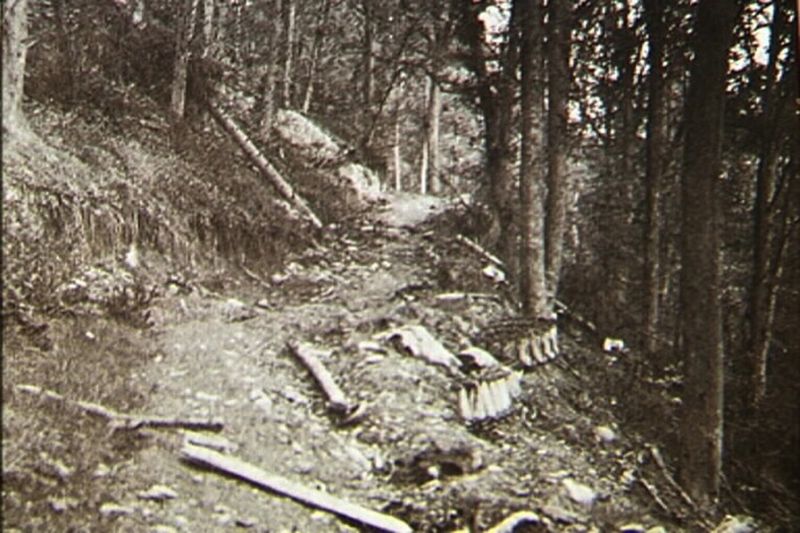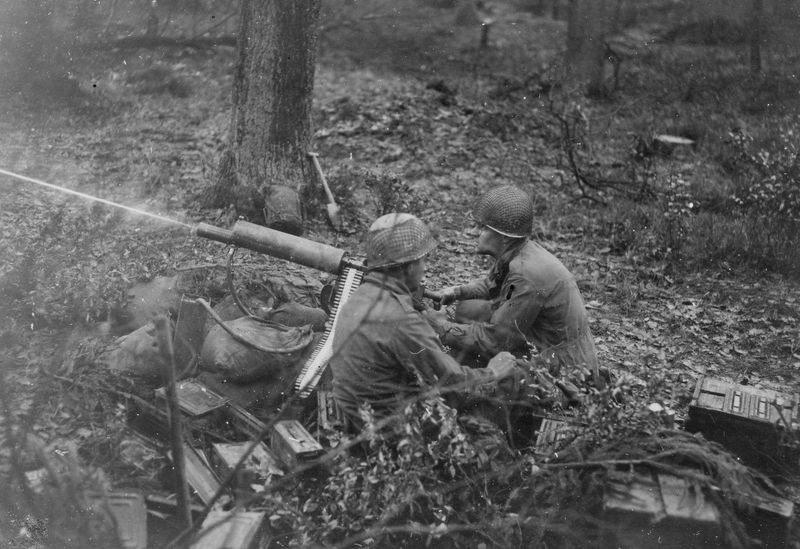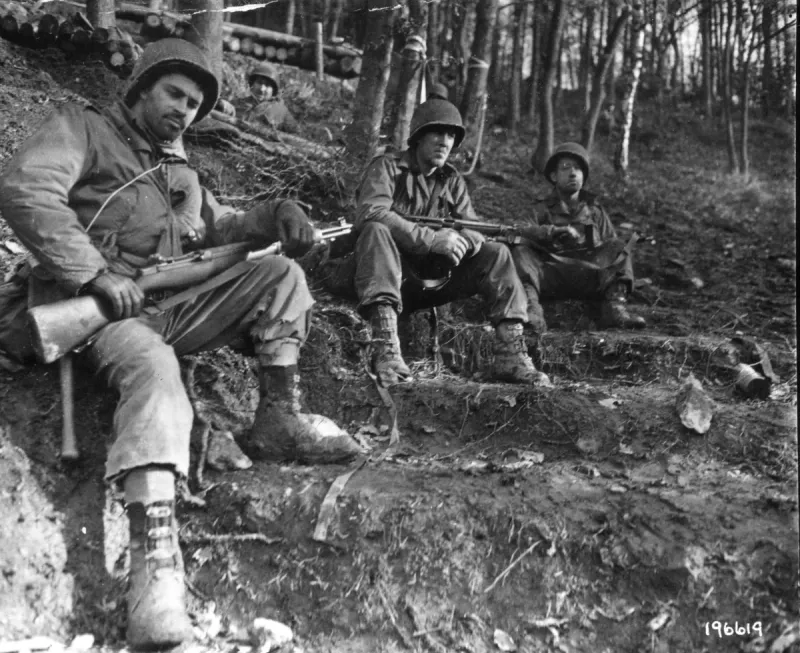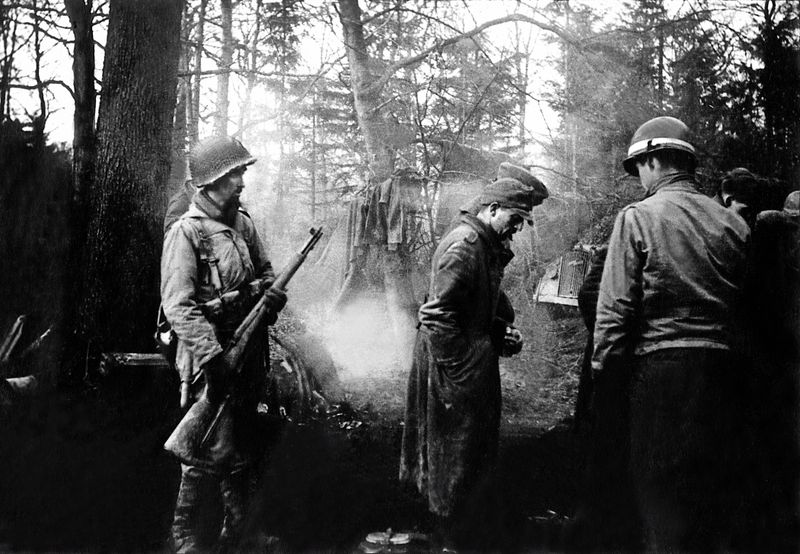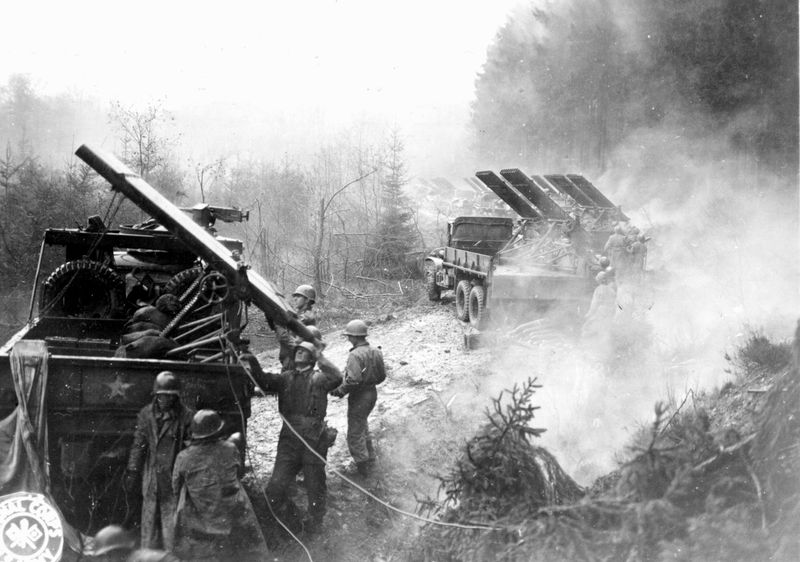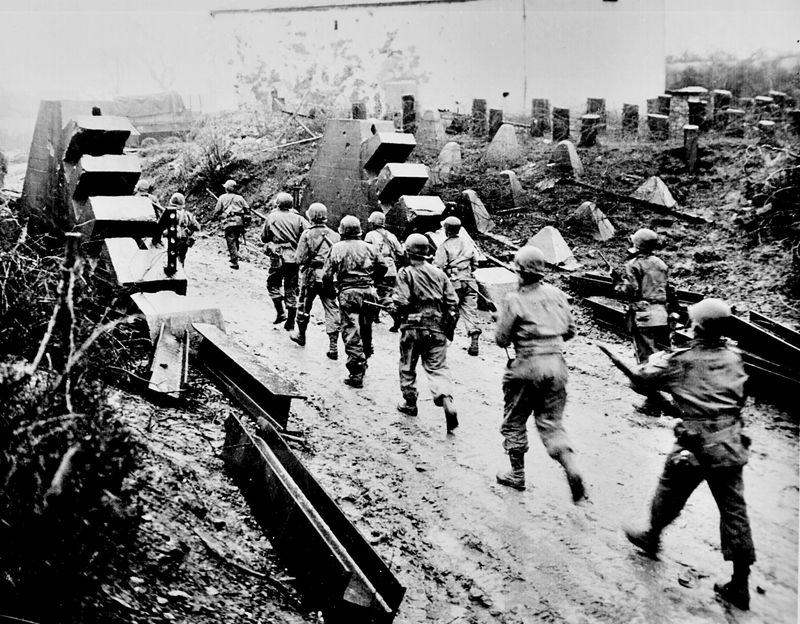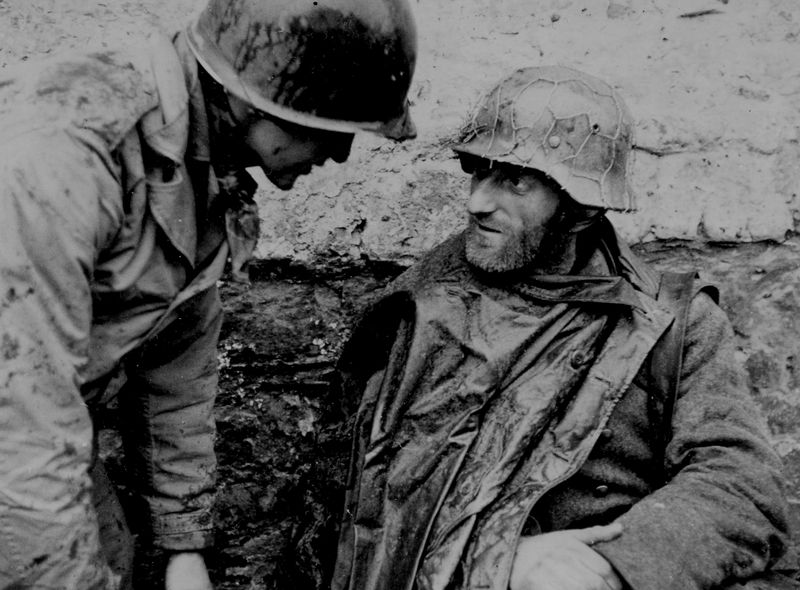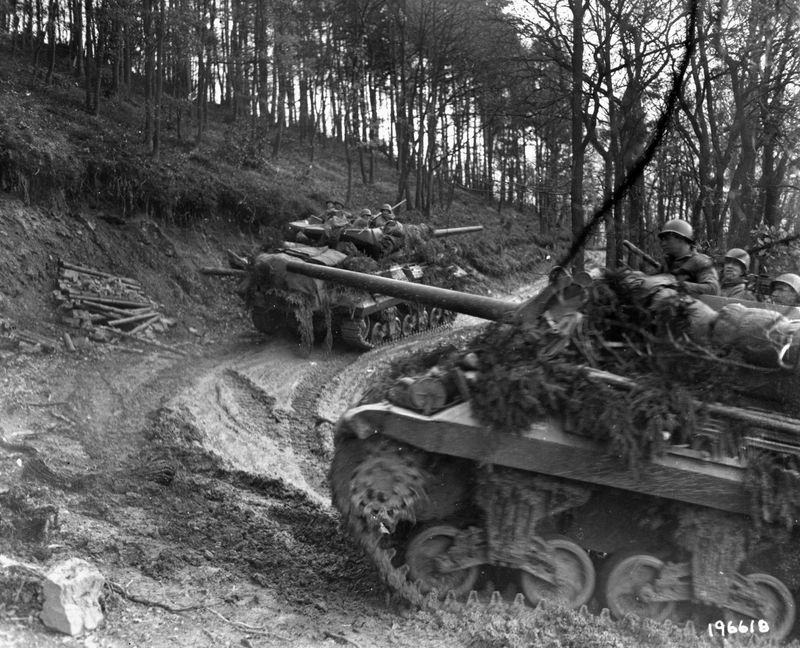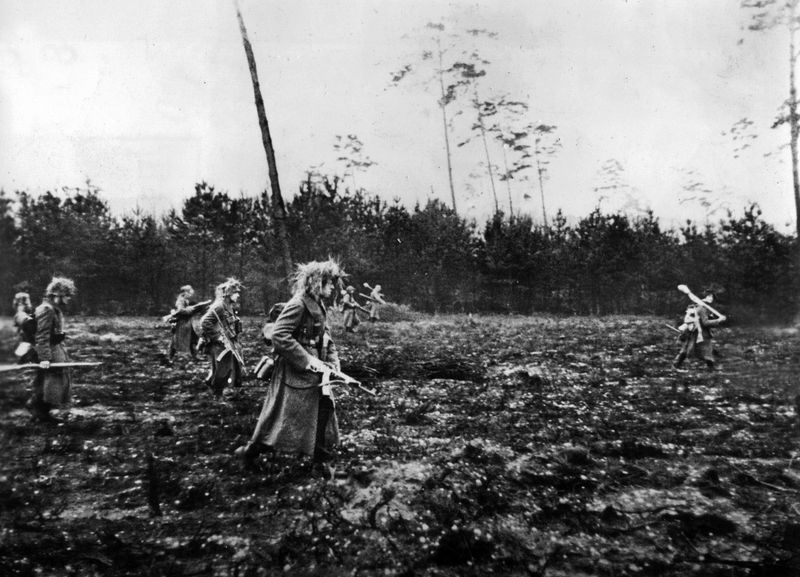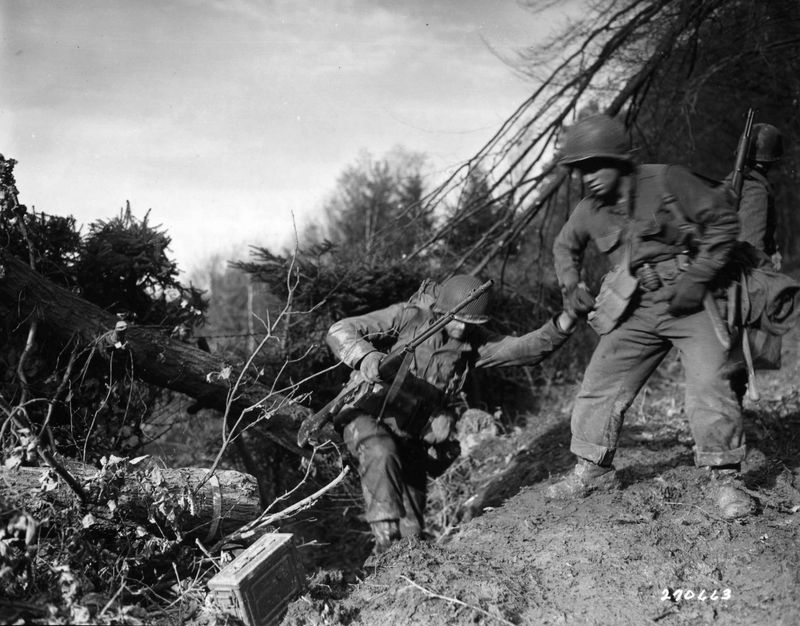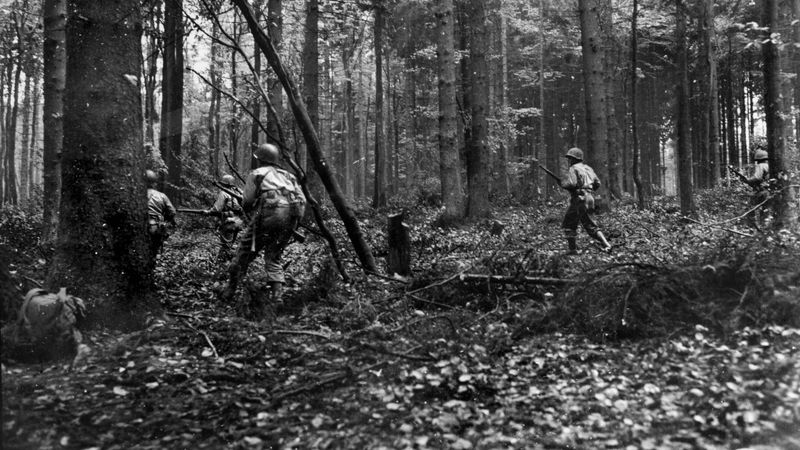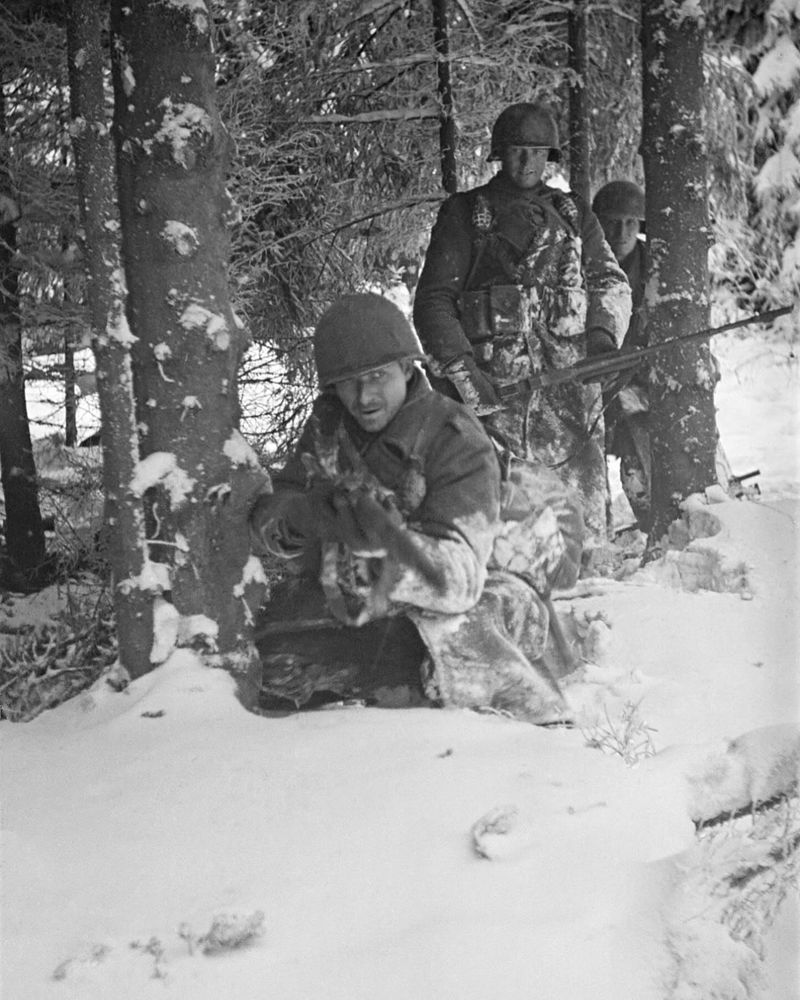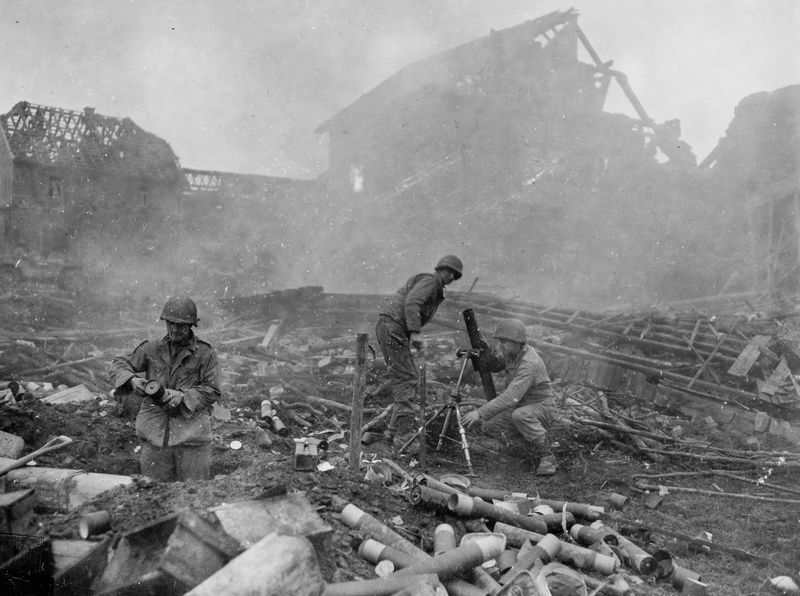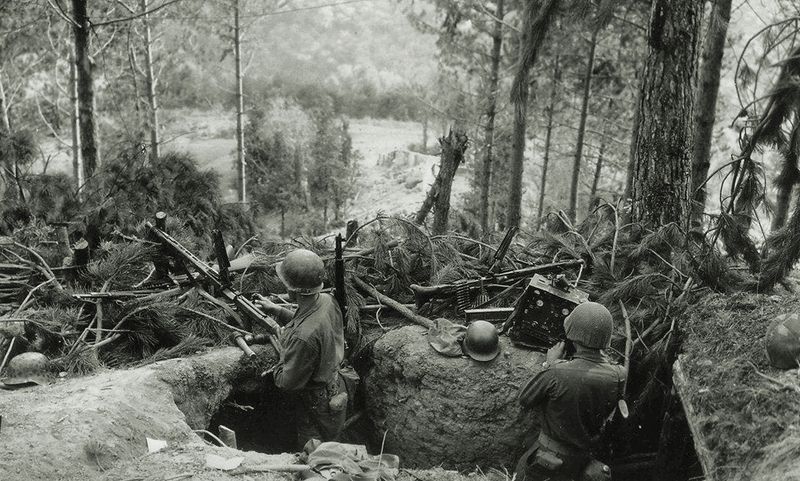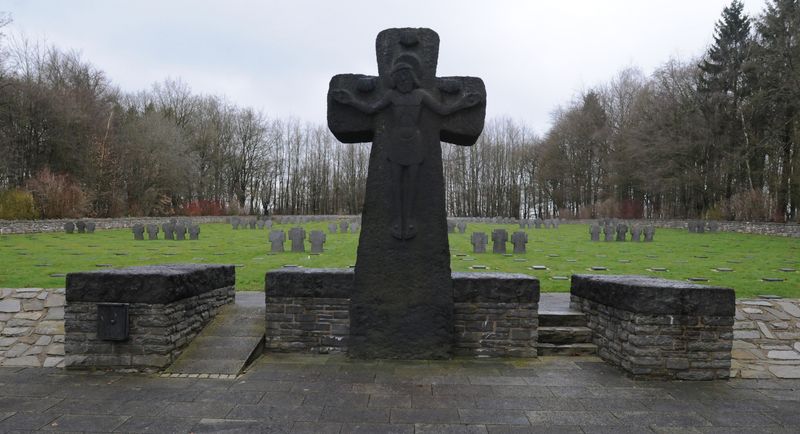The Battle of Hürtgen Forest remains one of the most harrowing and prolonged battles of World War II. Taking place from September 19, 1944, to February 10, 1945, this grueling confrontation between American and German forces unfolded in the dense, treacherous woods of western Germany.
The battle was marked by its ferocity, the challenging terrain, and the severe weather conditions that compounded the difficulties faced by the soldiers.
As the longest-running battle on German soil during the war, it saw significant loss and demonstrated the resilience and determination of those involved. Here are 15 gripping facts about this infamous battle.
1. The Dense Terrain
In the Hürtgen Forest, the dense terrain was a formidable adversary. The thick underbrush and towering trees made visibility difficult, turning soldiers’ movements into a slow and cautious endeavor.
Patrols needed to adapt quickly to the challenges posed by the natural environment. The forest’s layout provided excellent cover for German defenses, making it a deadly battlefield.
Troops had to navigate through narrow paths, which were often heavily mined and booby-trapped. Despite the dangers, soldiers pushed forward, battling not just the enemy but the very landscape itself. This natural fortress tested every aspect of their training.
2. Challenging Weather Conditions
The weather during the Hürtgen Forest battle was as harsh an enemy as the German forces. Cold autumn rains turned the forest into a quagmire, hindering troop movements and making the already arduous terrain more treacherous.
Supplies and reinforcements struggled to reach the front lines through the mud. Winter arrived with snow and freezing temperatures, compounding the soldiers’ misery.
Frostbite and trench foot became common afflictions, weakening the fighting capabilities of the troops. These conditions tested the soldiers’ endurance and resilience, highlighting their courage in facing both the elements and the enemy.
3. Operation Queen
Operation Queen was a massive Allied offensive aimed at breaking through the German defenses and advancing into the heart of Germany. Launched on November 16, 1944, it involved a coordinated assault by American forces.
The goal was to reach the Rur River and secure a path to the Rhine. Despite strategic bombing campaigns intended to weaken German positions, the defenses remained robust, and the Hürtgen Forest stood in their way.
The operation faced numerous setbacks, including fierce resistance and unfavorable weather. Yet, it demonstrated the Allies’ determination to push forward at great cost.
4. Heavy Casualties
The Battle of Hürtgen Forest was costly, with heavy casualties on both sides. American forces suffered around 33,000 casualties, including those killed, wounded, or captured. German losses were similarly high, though exact figures remain debated.
The challenging environment and fierce resistance contributed to the staggering numbers. Medical units worked tirelessly under difficult conditions to save lives, often risking their own safety.
The human cost of the battle underscored the intensity and the sacrifices made by those who fought. It served as a grim reminder of war’s brutality and the resilience required to endure it.
5. The Role of Artillery
Artillery played a pivotal role in the Hürtgen Forest, with both sides relying heavily on its destructive power. The dense forest made it difficult for infantry to advance, so artillery bombardments were used to clear paths and target entrenched positions.
The constant shelling echoed through the woods, creating an atmosphere of unrelenting tension. However, the forest’s canopy often reduced the effectiveness of these barrages, as shells exploded prematurely in the treetops.
Despite these limitations, artillery remained a crucial component of the battle strategy, illustrating the evolving tactics employed in such a unique environment.
6. The Siegfried Line
The Hürtgen Forest was part of the formidable Siegfried Line, a series of German defensive fortifications. Known for its bunkers, barbed wire, and dragon’s teeth, these defenses were designed to halt an Allied advance.
The dense forest terrain enhanced their effectiveness, making them difficult to bypass or destroy. Attacking forces found themselves embroiled in a deadly game of cat and mouse, with German forces utilizing the line to its full advantage.
The battle to breach the Siegfried Line highlighted the ingenuity and tenacity required to overcome these obstacles, cementing its place in military history.
7. The Impact on Morale
The prolonged and grueling nature of the Hürtgen Forest battle took a severe toll on the troops’ morale. Soldiers faced constant danger, harsh weather, and a seemingly impenetrable enemy.
The monotony of the forest landscape and the ever-present threat of ambush wore down their spirits. Letters from home and rare moments of respite became lifelines for these weary fighters.
Maintaining morale was a constant challenge for commanders, affecting combat effectiveness. Despite these hardships, the soldiers’ determination and camaraderie shone through, as they relied on each other to navigate the darkest days of the conflict.
8. Tank Battles in the Woods
Tank warfare in the Hürtgen Forest presented unique challenges. The dense woods and narrow paths limited mobility and visibility, making coordinated maneuvers difficult. Tanks often supported infantry by providing firepower against fortified German positions.
However, the terrain favored defenders, with ambushes a constant threat. The sound of engines and gunfire echoed eerily through the trees, adding to the tension.
Despite these obstacles, tank crews adapted to the conditions, showing ingenuity and bravery. Their efforts in such a restrictive environment highlighted the complexity of forest warfare and the adaptability of those involved.
9. Use of Mines and Traps
The Hürtgen Forest was heavily mined, posing a deadly threat to advancing troops. German forces utilized the terrain to lay complex minefields and booby traps, hindering progress and causing significant casualties.
Engineers worked tirelessly to clear paths and ensure safe passage, often at great personal risk. The constant threat of hidden explosives added an extra layer of danger to an already perilous environment.
These tactics showcased the ingenuity and resourcefulness of the defenders, while also highlighting the bravery and resilience of those tasked with overcoming such hazards. The battle proved a test of nerves and skill.
10. The Role of Air Support
Air support played a critical role in the battle, though it faced significant challenges. The dense forest canopy obscured targets, making precision bombing difficult. Pilots had to contend with adverse weather conditions and anti-aircraft fire as they provided support to ground forces.
Despite these obstacles, air missions succeeded in disrupting German supply lines and communications.
The psychological impact of air raids on both sides was significant, with the roar of aircraft and the explosions of bombs creating an ever-present sense of danger. Air support, while not decisive, was an essential component of the Allied strategy.
11. The Battle’s Duration
Lasting from September 19, 1944, to February 10, 1945, the Hürtgen Forest battle was one of the longest of World War II. Its prolonged duration was due to the resilient German defense and the challenging environment.
The extended conflict strained resources and tested the endurance of both sides. The drawn-out nature of the battle led to strategic reconsiderations and shifts in tactics. The perseverance of the soldiers involved became a testament to their resilience.
The battle’s length reflected the complexities of warfare in such an unforgiving setting and the high stakes of the campaign.
12. Medical Challenges
Medical teams in the Hürtgen Forest faced extreme challenges. The remote and rugged terrain made evacuation of the wounded difficult. Field hospitals, often set up in precarious locations, struggled with limited supplies and harsh weather.
Medics worked under constant threat of enemy fire, demonstrating courage and dedication. The battle’s conditions led to a high incidence of non-combat injuries, such as frostbite and trench foot, adding to their workload.
Despite these difficulties, medical personnel provided crucial care, saving countless lives. Their efforts highlighted the indispensable role of medical services in sustaining combat operations.
13. The Psychological Toll
The psychological impact of the Hürtgen Forest battle was profound. Soldiers faced relentless combat, harsh conditions, and constant threat, leading to mental exhaustion. The isolation of the forest, coupled with the lack of visible progress, contributed to feelings of despair.
Many experienced combat fatigue, affecting their ability to fight. Counseling services and rest periods became vital for maintaining mental health. The battle’s psychological toll emphasized the importance of mental resilience and support systems in warfare.
Understanding these effects has shaped modern approaches to military mental health care, recognizing the human cost of such grueling engagements.
14. The Legacy of Hürtgen Forest
The legacy of the Hürtgen Forest battle extends beyond its immediate military outcomes. It served as a case study in the challenges of forest warfare, influencing future military tactics and training.
The battle’s high cost in human lives highlighted the need for better reconnaissance and understanding of terrain. It stands as a stark reminder of the complexities and brutality of war.
Memorials and historical sites in the forest preserve the memory of those who fought, ensuring their sacrifices are not forgotten. The lessons learned continue to resonate, underscoring the importance of preparedness and adaptability in conflict.
15. Remembrance and Memorials
The Hürtgen Forest is now home to several memorials dedicated to the soldiers who fought there. These sites serve as places of reflection and remembrance, honoring the sacrifices made.
Visitors can follow trails through the forest, learning about the battle’s history and its impact on those involved. Commemorative ceremonies are held regularly, bringing together veterans, families, and historians.
These memorials preserve the memory of the battle and its lessons, fostering a deeper understanding of its significance. They stand as enduring symbols of the courage and resilience displayed by those who endured one of World War II’s most challenging campaigns.
